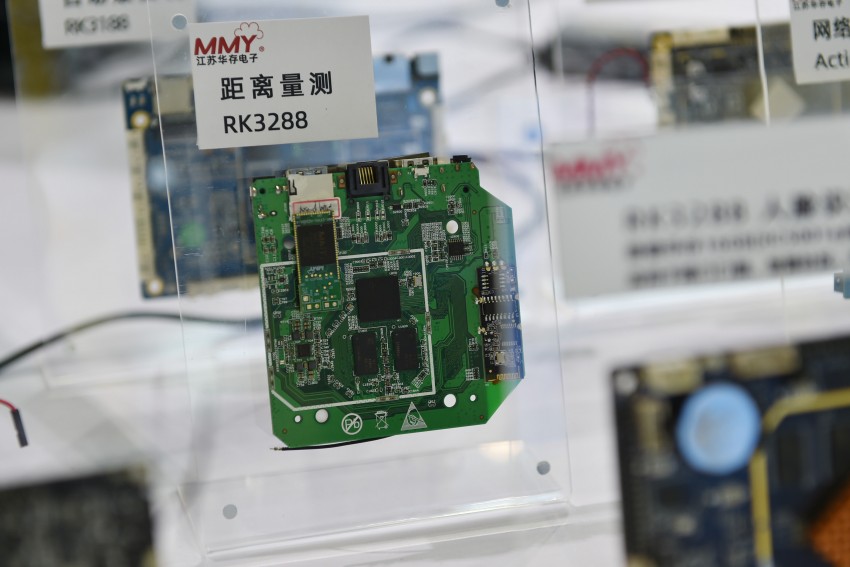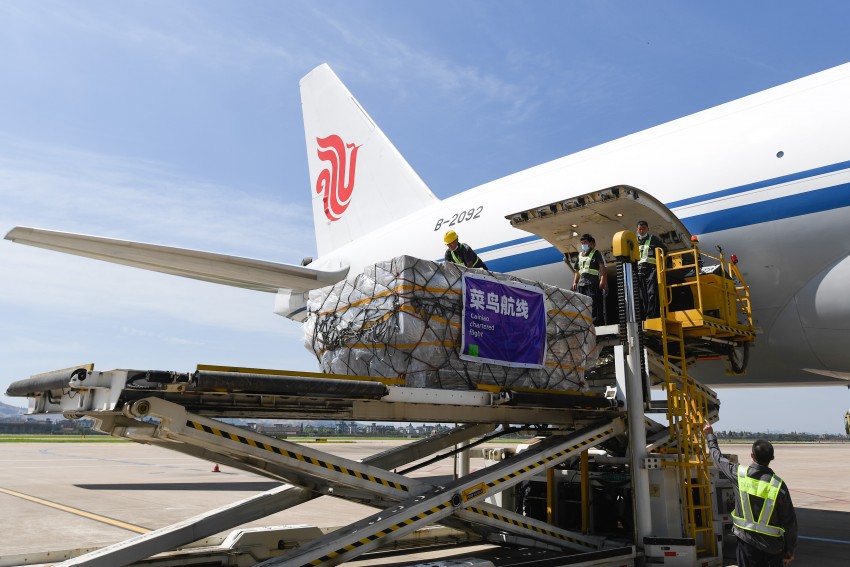
MERICS China Industries Briefing - September 2020
1. China’s leadership renews urgent self-sufficiency drive
At a glance: China’s top leaders launched a renewed push to drive forward indigenous innovation, delivering major speeches to scientists and corporate audiences across the country:
- September 11: Xi Jinping told a symposium of scientists that now more than ever China needs to advance scientific and tech breakthroughs to end its foreign reliance.
- September 14: Vice Premier Han Zheng called on chipmakers and other high-tech firms in Wuhan to accelerate the commercialization of new tech.
- September 19: Vice Premier Liu He visited the science and technology city of Mianyang – home to extensive military tech research – urging the city to intensify research on core technologies and strengthen independent innovation.
In addition, the head of the Chinese Academy of Sciences, Bai Chunli, said during a State Council press conference that over the next decade the academy would conduct targeted R&D on key technologies where China relies on US imports.
MERICS comment: The intensification of Beijing’s focus on tech breakthroughs comes amid increased US measures to cut off Chinese tech companies from US suppliers. The speeches were accompanied by new policy documents, adding credibility to the high-level rhetoric. On September 11, several ministries issued new guiding opinions on expanding investment in eight strategic emerging industries (SEIs), including 5G, new energy vehicles and biotech. The concept of SEIs is not new - it was first codified in a State Council document in 2010 and reinforced through the 13th Five-Year Plan for SEIs. Yet the document’s detailed list of tech prioritized for investment suggest a renewed focus on addressing China’s self-reliance “choke points” that is here to stay. The software and chip industries are major focus areas, as also evident in dedicated policy support announced in August.
Private sector investment is key to the government’s goals of advancing breakthroughs in SEIs. Beijing’s policy signaling, along with rallying speeches by China’s leadership, are already translating into private sector action. Stocks in Chinese integrated circuit (IC) firms have skyrocketed and nearly ten thousand Chinese companies reportedly changed their business scope to include IC-related business over the past 12 months. Meanwhile, a group of former tech executives from tech giants such as Huawei announced plans to launch a ‘domestic replacement’ fund by the end of the year that would invest in start-ups specializing in semiconductors, 5G, AI and other crucial technologies. Yet frenzied investments in semiconductor projects have long resulted in – and will likely continue to lead to – bankruptcies, abandoned projects and great local inefficiencies along the way.
2. China changes tack to advance the industrialization of hydrogen vehicles
Policy name: Notice of Five Ministries on Launching Fuel Cell Vehicle Demonstration Applications (五部门关于开展燃料电池汽车示范应用的通知) (Link)
Issuing bodies: MOF, MIIT, MOST, NDRC, NEA
Date: September 21, 2020
At a glance: The Ministry of Finance (MOF) and four other government departments issued a notice that adjusts the government’s support measures for hydrogen fuel cell vehicles. The four-year program replaces existing vehicle purchase subsidies with financial rewards for the industrialization of core fuel cell technologies. It aims to:
- Support breakthroughs in core technologies and industrial applications of fuel cell vehicles, especially medium- and heavy-duty commercial vehicles.
- Build a complete domestic industrial supply chain for fuel cell vehicles by advancing the development of core components (e.g. electrodes and catalysts).
The ministries will select eligible city clusters from applications filed by mid-November, with local governments using reward funds to support technology developers. The funds will be allocated based on performance evaluations.
MERICS comment: This program represents a significant step in the government’s acceleration of the development of China’s domestic fuel cell vehicle industry. It builds on a policy document from April that called for the improvement of financial subsidies for new energy vehicles, and marks a change in approach: Instead of subsidizing consumers, it provides merit-based incentives for fuel cell companies to develop, test and bring to market key fuel cell technologies.
The program is targeted and local – it hopes to leverage the innovative capabilities of city clusters. In September, Beijing issued its own five-year development plan for hydrogen vehicles, which states its aim to establish ten leading hydrogen vehicle manufacturers by 2025. Technically, foreign companies are not excluded from the national reward program, but the document clearly outlines state ambitions to create a “domestic cycle” for the fuel cell vehicle that avoids reliance on inputs from foreign companies.
3. China expands network of free trade zones to boost innovation
Policy name: Beijing, Hunan, Anhui Pilot Free Trade Zone General Plan and Zhejiang Pilot Free Trade Zone Expansion Plan (北京、湖南、安徽自由贸易试验区总体方案及浙江自贸试验区扩展区域方案) (Link)
Issuing body: State Council
Date: September 21, 2020
At a glance: The State Council has issued a master plan for the establishment of three new pilot free trade zones (FTZs) with different areas of focus:
- Beijing is to become a globally influential innovation center that leads the expansion of trade in services and acts as a pilot zone for the digital economy.
- Hunan is to become a world-class base for advanced manufacturing of high-end equipment, with links to the Yangtze River Economic Belt and Greater Bay Area regions, as well as strong economic and trade relations with Africa.
- Anhui is to focus on science and technology innovation, develop advanced manufacturing and strategic emerging industries, as well as promote the integrated development of the Yangtze River Delta.
The plan also announced the expansion of Zhejiang’s existing pilot FTZ, calling for the establishment of Ningbo as an international shipping hub as well as the construction of new facilities for the stockpiling of energy and agricultural products. For Zhejiang, it specified goals for 2025 and 2035, by which point the zone is to have become a new type of international trade center.
MERICS comment: This brings China’s total number of pilot FTZs to 21. In the context of an increasingly unstable external environment, they mark an attempt to boost trade and investment and strengthen regional links, both within China and with alternative trading partners.
All pilot FTZs increasingly focus on boosting innovation and attracting high-end tech talent. The Beijing pilot FTZ, announced by Xi Jinping on September 4 and detailed in a work plan, lists the goal of creating concentrated clusters for venture capital investment, digital trade, and innovative services. In September Hainan also issued a new plan to attract overseas talent to its Free Trade Port, alongside concrete criteria for the identification of top-notch foreign talent. European companies may be able to benefit from favorable local FTZ policies but should keep in mind China’s poor track-record of not walking the talk when it comes to market opening and genuinely free trade in its FTZs.
4. Air transportation to breathe new life into China’s economy
Policy name: NDRC and CAAC Opinions on Promoting the Development of Air Cargo Transportation Facilities (国家发展改革委 民航局 关于促进航空货运设施发展的意见) (Link)
Issuing bodies: NDRC, CAAC
Date: September 4, 2020
At a glance: The National Development and Reform Commission (NDRC) and the Civil Aviation Administration of China (CAAC) have issued Opinions on how to promote the development of China’s air cargo transportation facilities. With a view to stabilizing industry and supply chains, the document sets two milestone years:
- By 2025, establish a professional cargo hub airport (货运枢纽机场) in Ezhou, Hubei province, and upgrade the cargo facilities at airports in Beijing, Shanghai, Guangzhou and Shenzhen.
- By 2035, build one or two more professional cargo hub airports, revise the plan for China’s national layout of transportation airports, and create national champions in aviation logistics.
The Opinions also call for the coordinated development of passenger transportation via airplanes. However, the government sees air cargo in particular as an important national strategic resource with high value added. Smooth air transportation is not only key for express deliveries but also for quick responses in case of an emergency.
MERICS comment: A stable transportation network is crucial for the revival and growth of China’s economy. On September 9, the NDRC and 13 other government bodies issued an implementation plan for deeper integration of logistics with manufacturing to boost China’s real economy. Xi Jinping has stressed that building a modern logistics system is key to implementing China’s dual circulation (双循环) development strategy – an initiative propagated by the Chinese leadership since May that gives precedence to the domestic cycle of production and consumption (inner circulation) over its connections with the global market (international circulation). More investments in China’s logistics infrastructure can be expected in the near future, opening up business opportunities for foreign companies, too.
5. The CCP tightens its grip on the private economy
Policy name: Opinions on Strengthening the United Front Work in the Private Economy in a New Era (关于加强新时代民营经济统战工作的意见) (Link)
Issuing body: CCP Central Committee
Date: September 15, 2020
At a glance: The Central Committee of the Chinese Communist Party (CCP) published guidelines on how to better align the private economy with party goals through the work of the United Front (统一战线), an umbrella organization that assists the CCP by increasing party influence and co-opting relevant groups in China and abroad. Amongst others, the Chinese leadership calls for:
- Better ideological education of people who work in the private economy.
- Stronger party-building efforts in private companies.
- More participation of the private sector in major national strategies such as Innovation-Driven Development and the Belt and Road Initiative (BRI).
The document aims to strengthen party leadership in times when China’s growing private economy is encountering new “challenges” such as a more diverse set of values, interests and demands of private entrepreneurs. President Xi, too, endorsed greater CCP guidance of the private economy.
MERICS comment: The United Front recently made headlines because of its orchestrated effort to provide China with Personal Protective Equipment (PPE) supplies from abroad to battle the domestic Covid-19 outbreak. It is one of Beijing’s primary vehicles for bringing non-party members in line with CCP goals. With no relevant details given in the guidelines, the work order for the United Front likely extends to both Chinese and foreign private enterprises and their personnel alike. The document marks the latest move that calls into question how independently private companies can operate in China and how “private” Chinese companies really are. After all, Beijing expects them to contribute to national strategic goals such as greater self-sufficiency and tech leadership. Foreign companies should brace for more active party cells interfering with their business operations. The message is clear: in Xi’s China, the party leads on everything.
Worth noting
Policy News
- September 4: SAMR issues draft regulations to protect business secrets, offering more nuanced definitions of key terms such as “technological information” (SAMR regulations (CN))
- September 4: MOST announces the establishment of two new national AI pilot zones in Wuhan and Guangzhou (MOST letter - Wuhan (CN); MOST letter - Guangzhou (CN))
- September 8: Foreign Minister Wang Yi announces China’s new Global Data Security Initiative (MOFA announcement (CN); WSJ article (EN))
- September 8: PBOC announces plans to build financial technology hubs in Shanghai, Shenzhen and Hangzhou (Xinhua article (CN); State Council article (EN))
- September 11: Beijing plans to build the world’s first high-level autonomous driving demonstration zone (CCTV article (CN); Caixin article (EN))
- September 19: MOFCOM issues a set of provisions outlining key features of the Unreliable Entities List (MOFCOM rules (CN))
- September 21: MIIT issues three-year action plan for the digital transformation and smart manufacturing in the building materials industry (MIIT plan (CN))
- September 21: Big data conference in Beijing release the “Big Data Standardization White Paper (2020)” (MIIT announcement (CN); White paper (CN))
Corporate News
- September 1: Geely Auto plans to raise CNY 20 billion at Shanghai’s STAR Market to invest in new car models and technologies (Reuters article (EN))
- September 17: New telecoms giant Unified National Network (UNN) one step closer to commercial operation (Caixin article (EN))
- September 22: EV start-up WM Motor raises CNY 10 billion for the development of smart vehicle technologies (Reuters article (EN))
- September 28: VW plans to invest EUR 15 billion in e-mobility with three JVs in China (Auto News Europe article (EN))
The MERICS China Industries Briefing is a monthly round-up of key developments in China’s industrial policy landscape and innovation system. It features brief analyses of the government’s industrial strategies, technology plans and policy guidelines that shape China’s industrial upgrading and economic trajectory. The briefing also captures corporate activities that are driving cooperation and competition between Chinese entities and their European counterparts.
If you would like to receive the MERICS China Industries Briefing in your mailbox, subscribe here.



